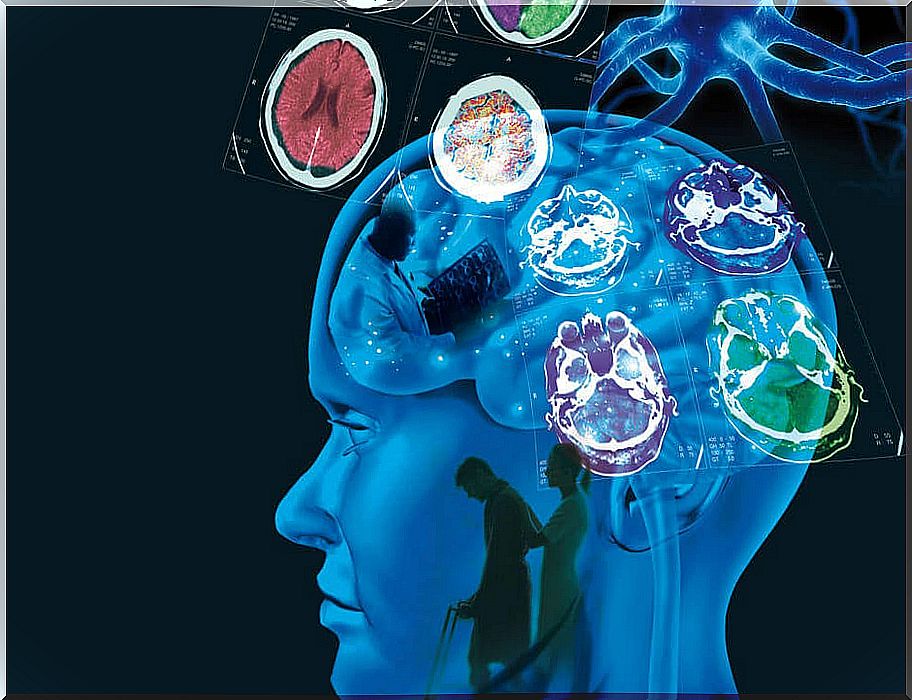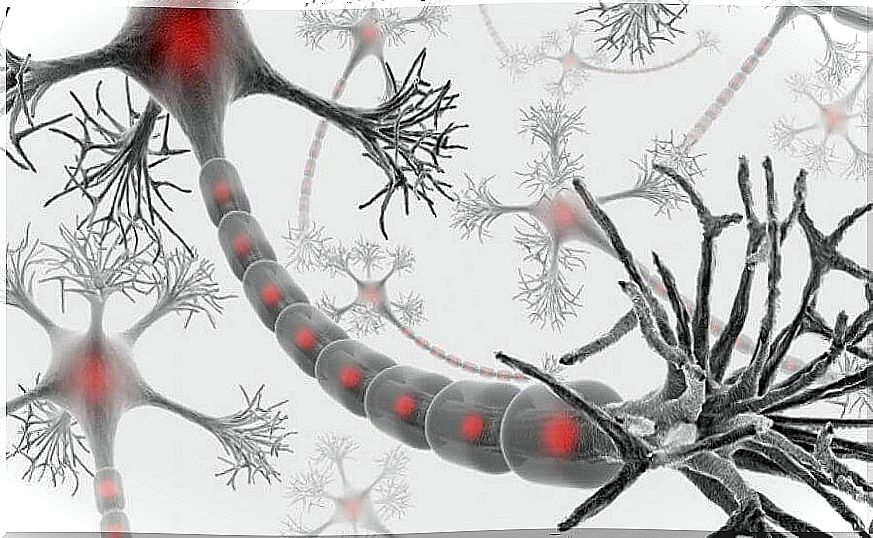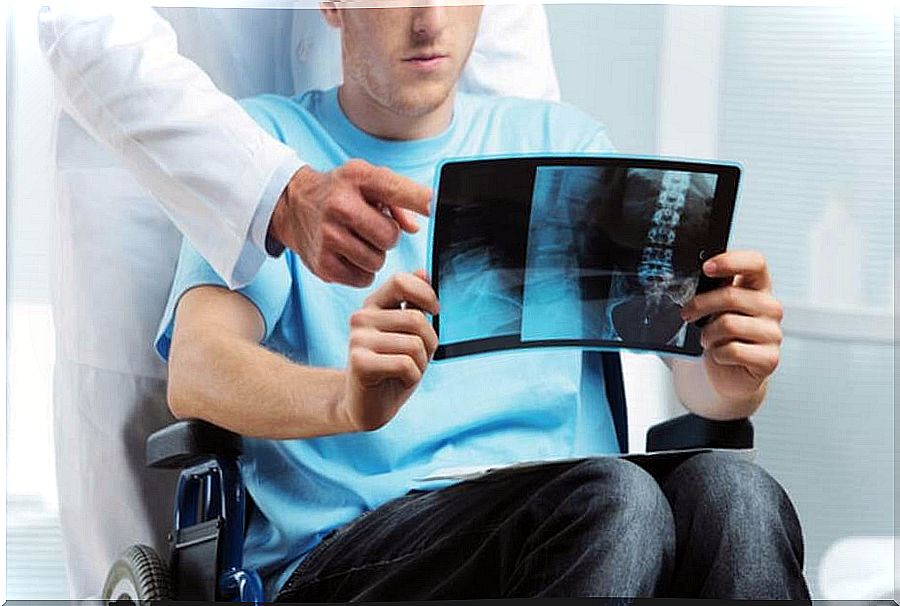Multiple Sclerosis: Causes, Symptoms And Treatment

Multiple sclerosis is a chronic disease of the central nervous system. It is present throughout the world and is the most common cause of neurological impairment in young and middle-aged adults, especially in women.
Surrounding and protecting the nerve fibers of the central nervous system is a material composed of proteins and fats called myelin that facilitates the conduction of electrical impulses between these fibers. In multiple sclerosis, myelin is lost in various areas, sometimes leaving scars (sclerosis). These injured areas are also known as demyelination plaques.
Myelin not only protects nerve fibers but also facilitates their function. If myelin is destroyed or injured, the ability of the nerves to conduct impulses is drastically reduced. Fortunately, the myelin injury is reversible in many cases.

What Causes Multiple Sclerosis?
Multiple sclerosis is of unknown etiology. Its cause is unclear and various mechanisms have been identified. These include immune, hereditary, and infection factors.
The exact role of viral infection in the initiation and maintenance of multiple sclerosis is unknown. Even so, several viruses have been studied in relation to this disease. The Epstein-Barr virus has been linked to demyelination (loss of myelin sheaths). In children there is evidence of vulnerability with exposure to this virus.
Among environmental factors, viruses are the agents most studied as triggers or determinants of the disease. Viruses are suspected of acting on oligodendrocytes, modifying them in childhood and subsequently conditioning an abnormal immune response (altering correct myelination).
About genetic predisposition, this seems clear. In studies on univitelline twins, the risk of suffering from multiple sclerosis is 31%, while in dizygotic it is around 5%.
Symptoms of Multiple Sclerosis
The onset of the clinical picture may be so mild that the person does not feel the need to go to the doctor. The most frequent initial symptoms are weakness of one or more limbs, blurred vision, altered sensation, double vision (diplopia) and difficulty coordinating movements (ataxia).
Limb weakness is also typical, with fatigue after exercise, difficulty climbing stairs, loss of dexterity, and increased muscle tone. These symptoms usually appear gradually.
Fatigue, the most common symptom
Fatigue is the most common symptom in multiple sclerosis, affecting 2/3 of patients. Half of them describe it as the most unpleasant sensation, visibly affecting the quality of life.
Fatigue dramatically and significantly reduces the quality of life of multiple sclerosis sufferers. Therefore, it is a factor to take into account but difficult to handle and interpret, due to the subjectivity of perception.
Loss of energy affects both motor and cognitive skills and must be differentiated from weakness, a sensation of loss of energy, and difficulty concentrating. Therefore, it is necessary to make a differential diagnosis of fatigue in multiple sclerosis with clinical pictures such as depression, motor disorders, thyroid disease, side effects of medications such as antispasmodics and immunosuppressive agents.

Outbreaks
Something very typical of multiple sclerosis is the appearance of flare-ups (relapse, recurrence, exacerbation). Outbreaks are characterized as symptoms of neurological dysfunction lasting more than 24 hours.
To accept the existence of outbreaks, they must affect different parts of the central nervous system and be separated by a period of time of at least one month. This disappearance of symptoms is defined as remission, being characteristic an improvement or disappearance of symptoms and signs that last at least 24 hours.
Auxiliary symptoms
There is a group of auxiliary symptoms that when clinically expressed support the diagnosis of multiple sclerosis. They are as follows:
- L´hermitte’s symptom : it is characterized by a sensation of electrical discharge that runs through the entire spinal column. Sometimes it reaches up to the arms or legs. This sensation occurs when the person tilts the neck forward.
- Sensitivity to heat.
- Uhthoff’s symptom: clinical worsening in relation to the elevation of body temperature, either caused by external factors (summer months, hot shower, tobacco) or internal factors (fever, intense exercise, menstruation).
- Paroxysmal seizures : l
Multiple sclerosis treatment
Unfortunately, at this time, there is no treatment capable of curing the disease or positively altering its natural clinical course. In the long term, the goal is to try to reduce the number of outbreaks, the sequelae and the progression of disability. For this, immunosuppressants (azathioprine, cyclophosphamide, methotrexate) and interferons (alpha) are basically used.
On the other hand, for the treatment of the flare, corticosteroids are used at high doses for short periods of time (3-5 days). Correctly identifying the outbreak is key to being able to establish the diagnosis and propose a correct therapeutic approach.
The symptomatology of the outbreak is the expression of one or more lesions resulting from an inflammatory process located in the central nervous system and, therefore, its treatment is focused on controlling the inflammatory process, especially with corticosteroids.
Symptom treatment
Symptomatic treatment can be summarized as follows:
- Spasticity : baclofen, diazepam, dantrolene sodium …
- Fatigue : amantadite, modafinil, metalphenidate …
- Pain : carbamazepine, phenytoin, gabapentin, pregabalin …
- Bladder hyperreflexia : oxybutynia, betanechol …
- Cognitive deficit : donepezil, beta interferon, memantine …

Rehabilitation treatment
Rehabilitation treatment is of great importance with the fundamental objective of preventing disability and handicap of the affected person or at least reducing it as much as possible.
The patient must be trained in new skills, enhancing their healthy systems. In this way, you will be able to maintain some independence. For this, it is essential to adapt or modify the patient’s social and work environment. In addition, psychological support for education and support to the patient, family and caregivers is essential.
It is recommended to carry out multidisciplinary rehabilitative treatment appropriate to the evolutionary moment of the person with multiple sclerosis, since it can improve the quality of life related to health and functionality in the activities of daily life. Many of the organizations of people with multiple sclerosis usually have this type of treatment, focused on a comprehensive rehabilitation.









